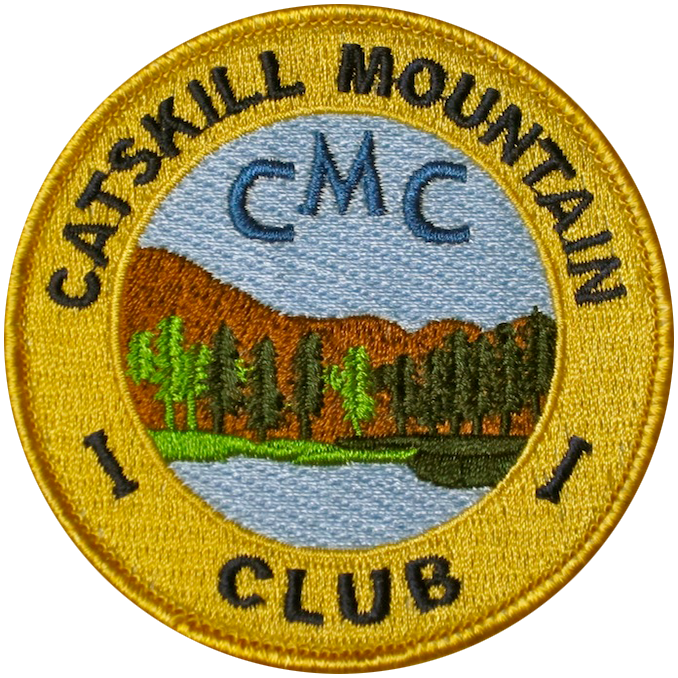Cross Country Skiing at the SUNY Delhi Golf Course
by Peter Manning
Exercising your arms and legs simultaneously while gliding through quiet, snowy scenery – cross-country skiing is an ideal solution for maintaining fitness and getting outside in the winter. Before we review the offerings at SUNY Delhi, let’s cover a few of the basics of the activity and its equipment.
The cross-country ski is an ingenious contraption, simple and slender in appearance, yet deliberately arched in the mid-section. This camber enables the skier’s body weight to be transferred downward to first get traction on the compressed ski (the kick) and then, unweighting the ski, lunge forward (the glide). One leg kicks while the other one glides. Add the poles for each arm, and you get moving quite well, even when trying the activity for the first time. This the “classic” style of cross-country skiing. And the magic you feel upon getting the hang of it may just never go away. Plus, you can always improve upon your form and upgrade your equipment.
The grab in the kick zone surface of the ski is supplied by a either a serrated surface with “teeth” (waxless ski), or by a sticky wax applied to the kick zone (waxable ski). Meanwhile, the glide is made possible by the smooth surfaces on the tips and tails of the ski, and it can be emphasized with glide wax on either type of ski. This major distinction between the types of cross-country skis is important. While waxless skis are generally considered for beginners, these skis can sometimes be especially effective in icier conditions, even for the advanced skier. By contrast, waxable skis are typically much thinner in width and require more preparation on a regular basis. Numerous kick and glide waxes are available for the full spectrum of temperatures and snow consistencies. Glide waxes are ironed into the ski surface then scraped, while kick wax can be rubbed on and buffed with a cork. The payoff to all the preparation is speed, which translates to better efficiency in ski performance with less energy expended over time and distance.
The enjoyment of classic cross-country skiing is greatly enhanced by skiing on a groomed surface. These conditions are made possible by proper grooming equipment to prepare the snow. Fortunately, SUNY Delhi College has acquired a specialized utility vehicle with snow treads and a classic track setter. The result is a quality trail system at the college’s Golf Course, which is open to the public at no cost. David DeForest, Assistant Professor in Applied Sciences, is the leading force in maintaining the trails each winter. The trails begin at the Bluestone Pub and Restaurant at the foot of Scotch Mountain Road (off Arbor Hill Road). There are about four miles of trails with easy and intermediate loops. They are situated in a peaceful setting that includes two crossings of the Little Delaware River and great views of Bell Hill. Complete grooming of the trail system takes about three hours, while re-grooming is also conducted to keep the surface and tracks clean and firm. This promotes the skiing experience because the recessed tracks allow the skier to look around, enjoy the scenery, and maintain good form, instead of trudging through snow.
Professor DeForest teaches a cross-country ski course each winter. The course is taken by Adventure Recreation and Physical Education students in the Natural Resource Recreation and Sports program. Students are fortunate to have some of their classrooms outside. In addition to the golf course ski trails, the SUNY Outdoor Education Center (the nearby park on Route 28 also open to the public) provides hands-on experience for several classes, while skills for the kayaking class are developed along the Delaware River.In past winters, DeForest has conducted ski clinics for the public and rented skis and snowshoes. While weather has always been a factor, the pandemic has suspended these community options. Yet the golf course ski trails remain a tremendous community asset. If you’re a beginner, the grooming and the gentle terrain is just right; if you’re an advanced skier, the intermediate trails will challenge you. In any case, as more skiers discover one of the only groomed venues in the region, there is a growing appreciation for the effort and coordination that SUNY and DeForest have contributed to improve our recreation opportunities.
If you go, please sign the register box for safety and to help determine user interest for future programming and improvements. No pets are allowed on the trails; and snowshoers are asked to stay off the set track.

